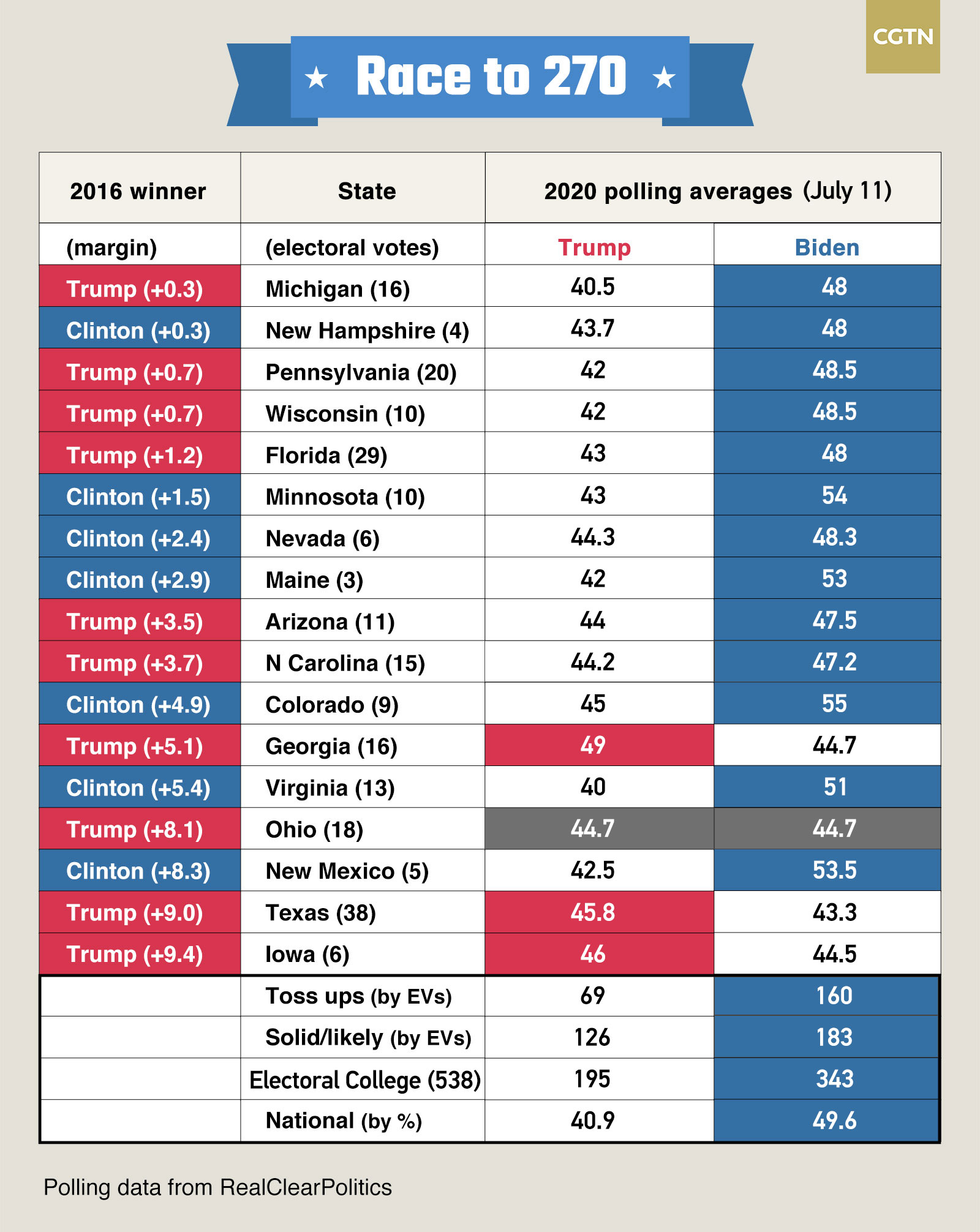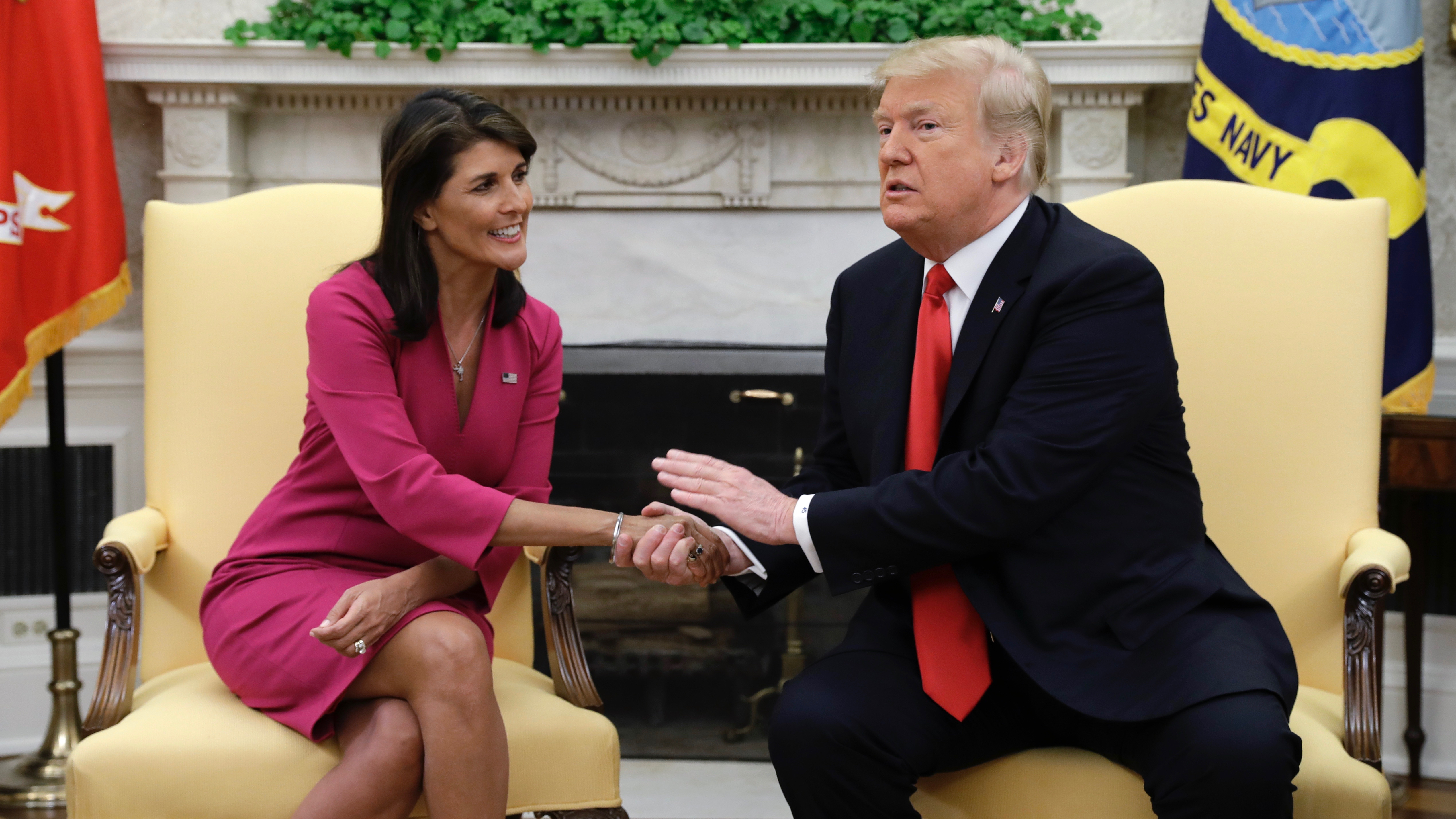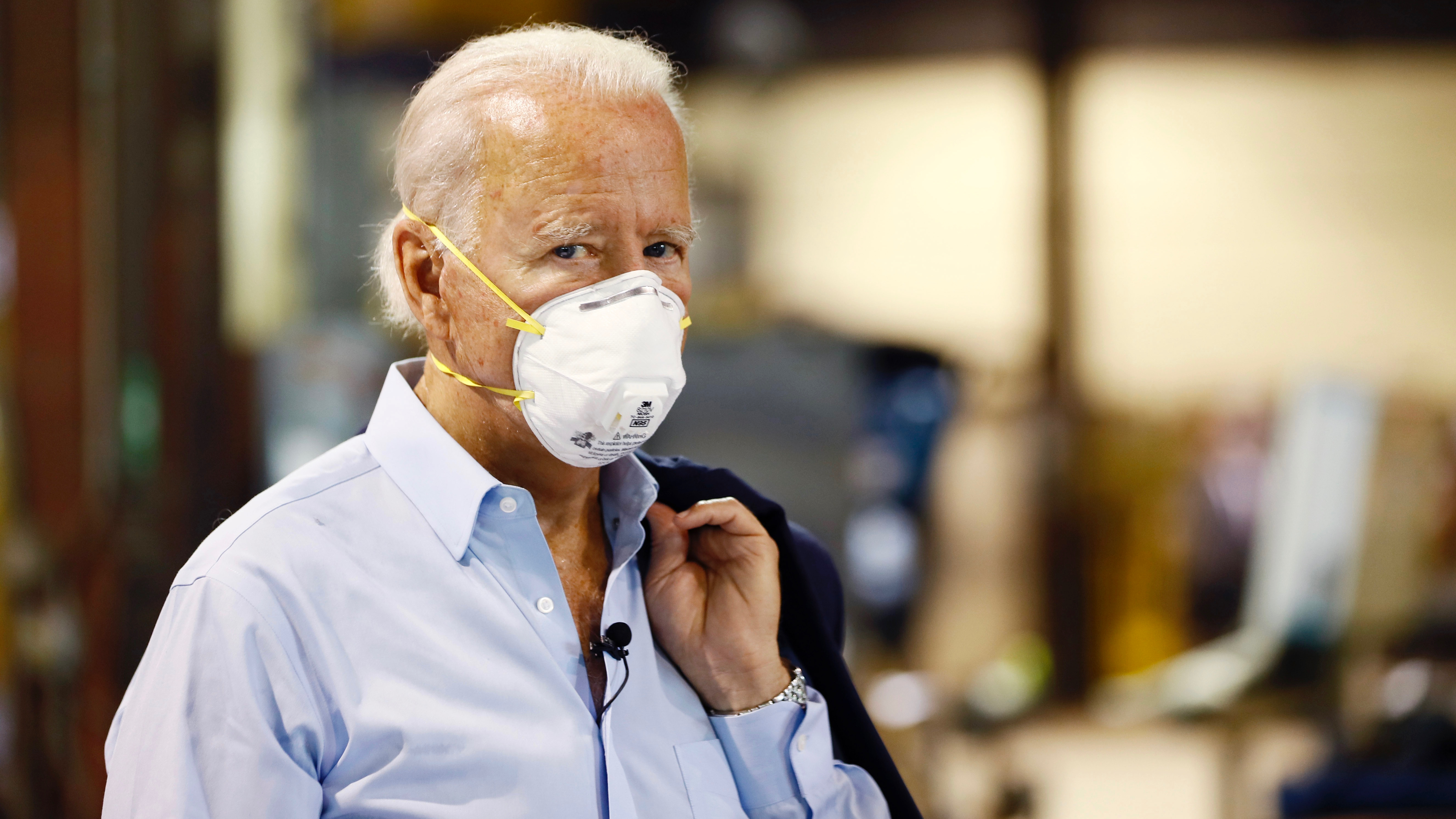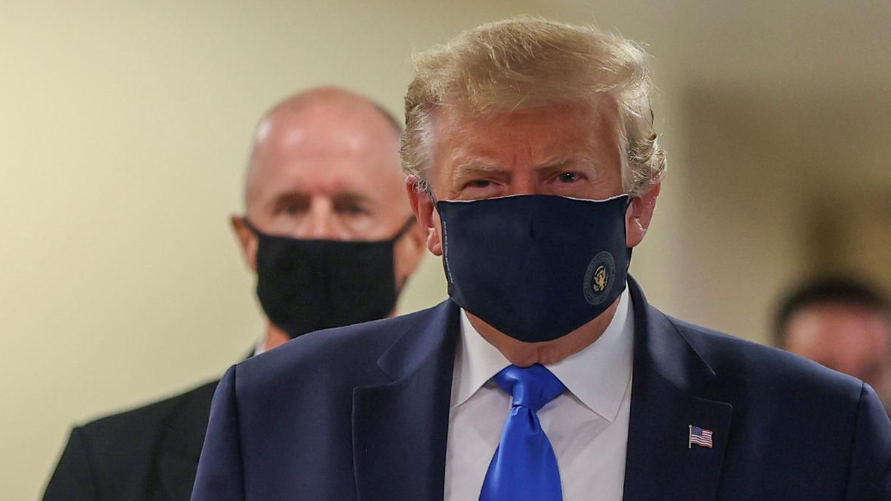Polls only give a snapshot in time, but a little over 100 days from the U.S. presidential election a clear picture is developing: Donald Trump is losing to Joe Biden, and needs to change the trajectory of the race soon to stand a chance of winning a second term.
Biden currently holds a national polling average lead of 8.7 points, according to the RealClearPolitics average, but more importantly is ahead in six battleground states won by Trump in 2016. If the election took place today, state-by-state averages suggest Biden would beat Trump by 343 to 195 in the electoral college.

The race is expected to tighten as polling day approaches and unforeseen factors could yet emerge, but a defeat for Trump on the scale the polls currently suggest would likely see the Republicans lose the Senate as well as the White House.
With fundraising and polling momentum moving against Trump, what options does he have to turn the race around?
1. A dramatic gesture
There have long been rumors that Trump could drop Vice President Mike Pence in favor of Nikki Haley, the former U.S. ambassador to the UN who is expected to make a run for the White House in 2024 and has been active on the 2020 campaign trail.
Pence is credited with keeping peace with religious conservatives in 2016 and helping maintain party unity, but core Republicans are now overwhelmingly loyal to Trump — it's independents, women and new voters he needs to make inroads with.
Replacing a sitting vice president would be a high-risk move — it hasn't been done since 1944 — but the former Indiana governor, who heads the White House's coronavirus task force, doesn't appear to add much to the ticket.
02:40

While historically there's little evidence a vice presidential pick makes a significant difference electorally, having a woman of color with foreign policy and executive experience as a running mate would certainly change the conversation: Replacing Pence with Haley would make headlines, with unpredictable results.
An alternative eye-catching option, aside from a campaign staff shake-up, would be to persuade a conservative Supreme Court justice to step down and propose a female replacement — making a partisan nomination process a dividing line in the election.
A fulfilled promise to nominate conservative federal justices helped Trump win over Republicans in 2016, and could galvanize supporters again in 2020. The problem is, there's no vacancy — unless a sitting justice agrees to make way.
2. Draw Biden out
The Trump campaign has desperately tried to provoke mistakes from the Democratic candidate, but the often gaffe-prone Biden has climbed in the polls and out-fundraised his opponent while maintaining a low profile. A reelection attempt is a referendum on the incumbent, and the 2020 race is all about Trump.
In 2016, Trump was the insurgent and Hillary Clinton his foil. His attempts to mock the former vice president as "Sleepy Joe" have largely fallen flat, and a massive advertising campaign appears to have had little impact so far.

Democratic presidential candidate Joe Biden tours McGregor Industries, Dunmore, Pennsylvania, July 9, 2020. /AP
Democratic presidential candidate Joe Biden tours McGregor Industries, Dunmore, Pennsylvania, July 9, 2020. /AP
Many of Biden's positions are to the left of Clinton's in 2016, but he has cast himself as a moderate in comparison to the "democratic socialist" wing of his party and as an old, white man he is harder for Trump to attack with identity politics. Whoever Biden picks as his running mate, expected to be a woman of color, is likely to be targeted.
The Trump campaign will also be ready to amplify any mistakes or vulnerabilities as Biden makes more appearances on the trail over the coming weeks. The three presidential debates, the first of which is scheduled for September 29, will be big opportunities for Trump to try to poke holes in the 77-year-old Democrat's candidacy.
3. Change course on big issues
The Trump campaign has many problems, but the starkest is that the president's views on the big issues of the day are at odds with those of a majority of Americans.
As COVID-19 cases surge in the U.S. and Trump insists his administration is doing a good job, the latest Ipsos polling suggests 67 percent of Americans disapprove of his handling of the pandemic.
As Trump questioned the wisdom of wearing a mask and mocked Biden for doing so, Ipsos data showed nine in 10 Americans now wear one outside their homes. In a change of tone, the president on Saturday wore a mask in public for the first time.
00:52

As voters, companies, universities, sportspeople and politicians voiced support for the Black Lives Matter movement, Trump hardened his rhetoric against protesters as he tries to portray himself as the "law and order" president.
Sixty percent of Americans agree with the principles of the Black Lives Matter movement, YouGov polling suggests, and only 35 percent of voters believe Trump can effectively handle race relations, according to Pew Research.
There is time for opinion to change and Trump's positions are popular with his base of supporters, but without a shift in approach he risks alienating a majority of voters.
4. Economic stimulus
Trump has never been shy of increasing the deficit to boost the economy, as his 2017 tax plan showed, and had been banking on strong growth and jobs numbers to propel him to a second term.
The pandemic has dashed that hope, but the latest Pew data indicates 51 percent of voters are still confident in Trump's ability to make good decisions about economic policy, slightly ahead of Biden on 48 percent.
Read more:
Top candidates to be Biden's running mate
How Biden upended the race in 72 hours
With Republicans looking at a one-trillion-U.S.-dollar stimulus package and the Democrats favoring a plan three times bigger, the politics of putting more money in Americans' pockets is awkward for Trump.
But perhaps the president can tie himself to a spending package and hope that voters begin to feel an improvement before ballots are cast — which is likely to be well in advance of November 3 for many Americans, with voting by mail expected to surge — reinforcing his claim that only he is capable of rebuilding the economy.
5. Double down on the base
Trump is presently digging deep into his 2016 playbook, with hardening rhetoric about race punctuated by messages of division. Can such a strategy really work again?

Trump supporters at Dream City Church in Phoenix, Arizona, June 23, 2020. /AP
Trump supporters at Dream City Church in Phoenix, Arizona, June 23, 2020. /AP
Trump lost the popular vote to Clinton and won the electoral college with narrow victories in key states. Suburban women, independents and even older voters are moving against the Republican candidate, while public opinion has now shifted on some of the president's central themes.
He has railed against Obamacare, but the majority of voters now view it favorably according to multiple polls. And Gallup has found that more Americans now want more immigration than less for the first time since polling on the issue began in 1965.
It's difficult to see how repeating the 2016 plan alone is a winning formula, especially with a FiveThirtyEight average approval rating of just 40.1 percent.
And if nothing else works, there's always the rumored nuclear option: Trump could step aside in favor of another candidate, rather than lose.
(Videos by Ge Shimo, Li Yahui)